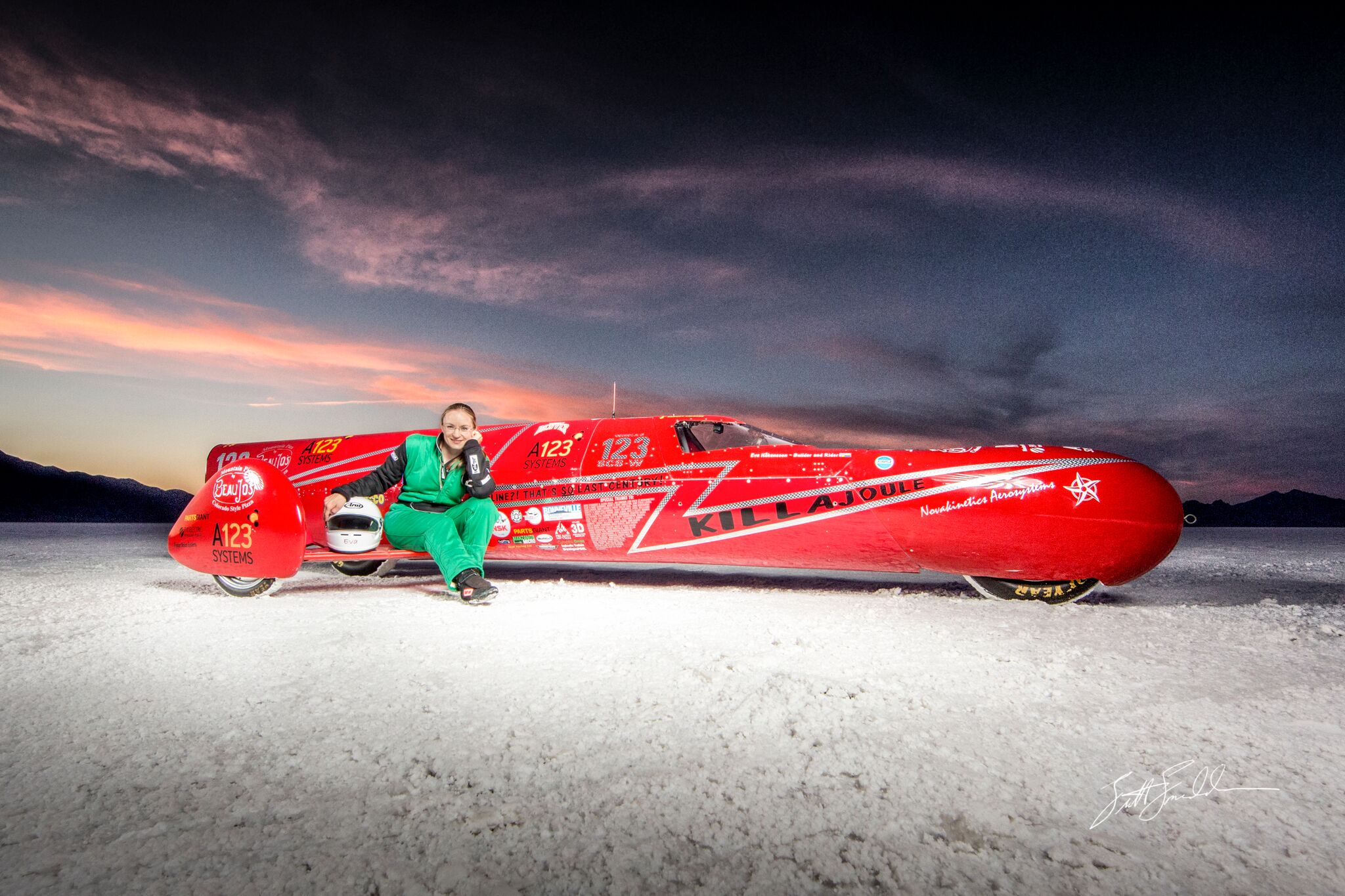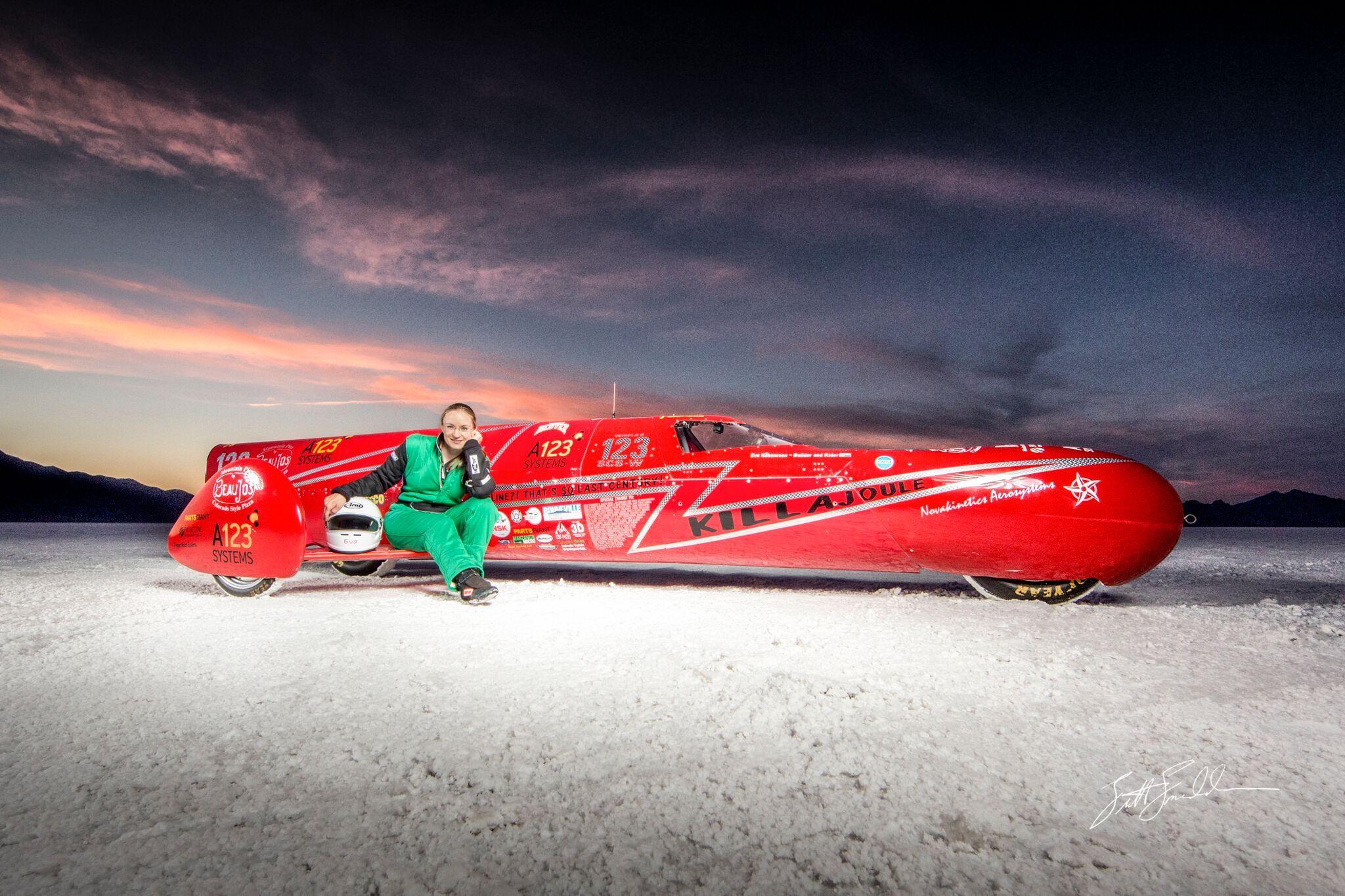
Dr. Eva Håkansson wants you to know the power of electric vehicles. She is proving it by setting world records with her custom-built electric motorcycle named KillaJoule, aided by LulzBot 3D printers. Her world record is currently 248.746 mph (400.2 kph), and with more 3D printed improvements in development, you will need all the luck you can get to catch her.
“The real purpose of the KillaJoule is what I call eco-activism in disguise,” Håkansson said. “We want to change the general public opinion about electric vehicles and particularly changing the image that they're slow … by building something that is so fast that nobody can ignore it.”
Håkansson, who holds a doctorate in mechanical engineering from the University of Denver in Colorado, USA, also uses KillaJoule to show that women can be engineers.
After spending 360 days a year working on KillaJoule with some help from her husband, Bill Dubé, Håkansson heads to the Bonneville Salt Flats in Utah, USA for five days of racing the last week of August every year. There, she shows off her handiwork, which features 3D printed parts made on a LulzBot 3D printer.
[Watch the KillaJoule in action.]
 “There is no more wonderful, beautiful way of creating aerodynamic parts like spoilers, leading edges, and so on than 3D printing,” Håkansson said. “3D printing is the absolute optimal way of doing that.”
“There is no more wonderful, beautiful way of creating aerodynamic parts like spoilers, leading edges, and so on than 3D printing,” Håkansson said. “3D printing is the absolute optimal way of doing that.”
Aerodynamic shapes such as these are for the side car and are printed in PLA, which is biodegradable. The speedometer housing is printed out of Chroma Strand INOVA-1800, a premium material Håkansson loves.
“It prints beautifully, it's strong, the surface finish is great, and the print quality is great,” Håkansson said.
The versatility of the LulzBot 3D printer with being able to print so many different materials is a benefit for Håkansson, as is the low cost of materials.
“If you compare to what it costs to have parts made or the time you would spend machining something similar or building it with using other methods, 3D printed parts are super cheap,” Håkansson said. “You can have maybe a 24-hour print, but you don't have to watch it for 24 hours. You just load it and then you go and do something else, so we consider the machine time almost free.”
With incredible reliability, the LulzBot TAZ 3D printer is going to be used in Håkansson's next project: A new bike that will hopefully have even more 3D printed parts.
In the meantime, Håkansson appreciates the value of having the LulzBot 3D printer for use in creating KillaJoule.
“It's opened a whole new dimension of manufacturing,” Håkansson said. “You can do things you can't even dream of making otherwise.”
Learn How Others Use LulzBot 3D Printers For Prototyping ➡
Photo credits:
'Eva_and_KillaJoule_by_Scott_Sneddon-DIY_Photography_1.jpeg' Photo © Scott Sneddon, DIY Photography, 2016 'Printing_strut_cover_KillaJoule_3.jpeg' Photo licensed CC BY-SA 4.0 International © Eva Håkansson
Video credit:
“Eva Hakansson: The Fastest Woman on Earth” Video © University of Denver, 2016
